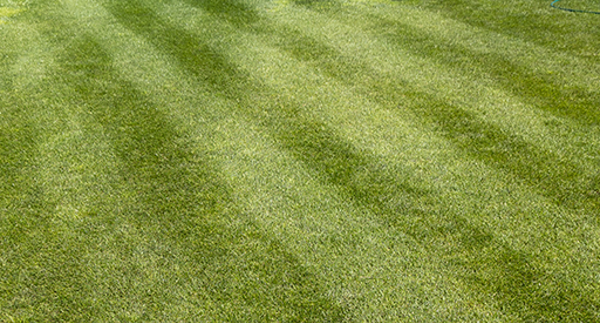
Would you like a lawn that’s the talk of the neighbourhood? Have fun and make a statement by adding stripes to your lawn.
Follow our steps below to create some theatre in your backyard with a striped lawn.
It’s all about mowing direction to achieve an envious striped lawn. The grass blades need to lay over in opposite directions - laying the lawn in one direction makes the lawn appear lighter and laying it down in the opposite direction makes it appear darker. The combination creates the stripe affect.
Using a reel mower is an easy way to create this affect. These mowers are available at DIY stores and specialty mower shops - so they are accessible to the home gardener. Check out what options are available and how they operate to achieve the striped affect.
For a better quality cut it is best to wait for any dew or water to dry before mowing.
How to create stripes in your lawn
- Set your reel mower to the highest height setting.
- Sometimes it is a good idea to cut a border in around the edge first before cutting in the main stripes. Or you could do this last as the final cut around the edge to tidy up the border!
- Line your mower up in the direction you’d like for the first row and mow to the end of that row.
- Turn 180 degrees (back in the opposite direction) and repeat this step until you reach the end of the lawn.
Alternate your cutting stripes regularly to prevent the grass from being trained to lean one way. Note: going over the same tracks each time can cause soil compaction meaning the soil particles get packed too tightly, making it hard for water and air to reach lawn roots.
Once you have finished mowing, edge the lawns to create a clean crisp border against concrete/mowing strips and tidy up with a blower or sweep debris.
Tui Pro Tip!
If you’d like to achieve even more theatre in your backyard, try creating a checkboard pattern! Follow the above instructions on creating a striped lawn then make the same alternating, parallel lines but perpendicular to the first set.
